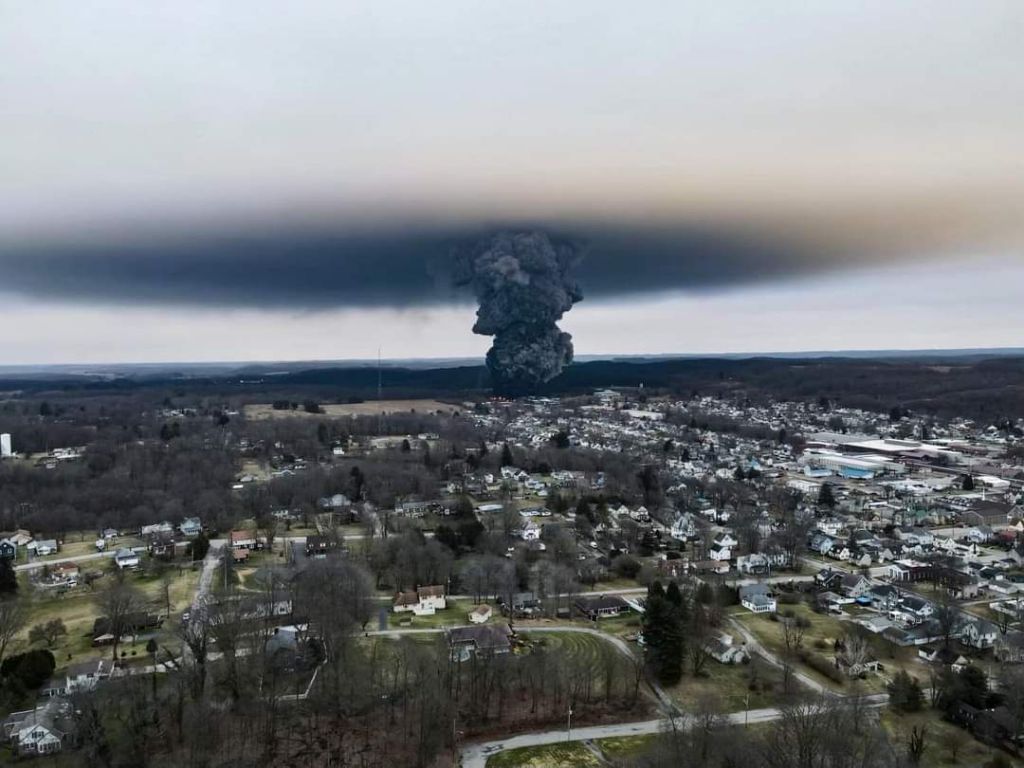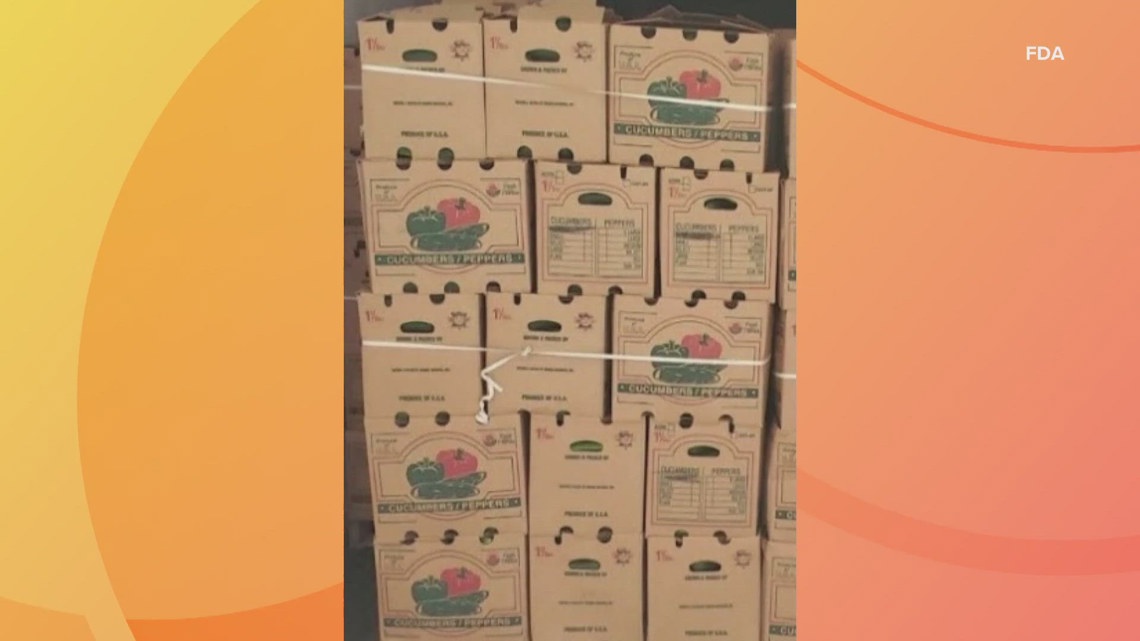Ohio Train Disaster: Prolonged Presence Of Toxic Chemicals In Buildings

Table of Contents
Types of Toxic Chemicals and Their Persistence
The Ohio train derailment released a cocktail of hazardous materials, posing a significant long-term risk to the surrounding community. Understanding the nature of these chemicals and their persistence is crucial to assessing the ongoing threat.
Vinyl Chloride and its Lingering Effects
Vinyl chloride, a known carcinogen, was a primary chemical released in the derailment. Its volatile nature means it can easily permeate building materials.
- Penetration: Vinyl chloride can seep into porous materials like drywall, carpets, insulation, and even wood, making complete decontamination incredibly difficult.
- Health Risks: Long-term exposure to vinyl chloride is linked to a range of serious health problems, including liver damage, various cancers, and neurological issues.
- Detection Challenges: Detecting and removing vinyl chloride from porous building materials is exceptionally challenging, requiring specialized equipment and expertise often unavailable in the affected areas.
Other Contaminating Chemicals
Beyond vinyl chloride, other hazardous chemicals released in the derailment, such as butyl acrylate and ethylene glycol monobutyl ether, also present long-term contamination risks.
- Butyl Acrylate: This chemical can cause skin and eye irritation, respiratory problems, and potential long-term health effects with prolonged exposure. Its persistence in building materials is a significant concern.
- Ethylene Glycol Monobutyl Ether: Similar to butyl acrylate, this chemical presents respiratory and skin irritation risks, and its potential for long-term health consequences warrants investigation. It can also linger in building materials, especially fabrics and porous surfaces.
- Identification and Mitigation: Identifying and mitigating the presence of these various chemicals requires sophisticated testing and remediation strategies, often exceeding the capacity of local resources.
Assessing and Mitigating Building Contamination
Assessing and remediating building contamination following the Ohio train derailment presents significant challenges.
Challenges in Detection and Remediation
Determining the extent of chemical penetration in buildings is complex and hampered by several factors:
- Complex Penetration: Chemicals can penetrate building materials at varying rates and depths, depending on the material's porosity and the chemical's properties. This makes uniform testing difficult.
- Lack of Standardized Protocols: There's a lack of widely accepted, standardized testing protocols for this unique type of contamination, hindering consistent and reliable assessments.
- Remediation Limitations: Current remediation technologies may be inadequate for removing certain chemicals from porous building materials, necessitating innovative solutions and extensive research.
Health and Safety Concerns for Residents and Workers
The potential health impacts on residents and those involved in cleanup efforts are significant:
- Respiratory Problems: Exposure to these chemicals can lead to acute and chronic respiratory issues, including asthma and other lung conditions.
- Skin Irritation: Direct contact can cause skin irritation, rashes, and other dermatological problems.
- Long-Term Health Effects: The long-term health consequences of exposure remain largely unknown, necessitating extensive health monitoring programs for affected populations.
- Psychological Impact: Living under the constant threat of chemical contamination also takes a significant toll on mental health, leading to stress, anxiety, and other psychological issues.
Legal and Regulatory Response to Building Contamination
The legal and regulatory response to the building contamination issue is crucial for ensuring accountability and protecting the affected community.
Governmental Actions and Accountability
Local, state, and federal agencies play a critical role in addressing the contamination:
- Regulatory Framework: The development and enforcement of regulations regarding building testing and remediation are paramount to ensuring public safety.
- Government Response: The speed and effectiveness of the government's response to the contamination issue directly impact the health and well-being of the residents.
- Legal Challenges: Legal challenges related to liability and compensation for affected residents and businesses are likely to arise, requiring careful consideration of legal precedents and regulatory frameworks.
The Role of Insurance Companies and Private Remediation
Insurance companies and private contractors also have essential roles in the remediation process:
- Insurance Coverage: The availability and adequacy of insurance coverage for building contamination is a key determinant of the financial resources available for remediation efforts.
- Qualified Contractors: Finding qualified contractors with expertise in handling these specific chemicals is essential, but the availability of such expertise is a limiting factor.
- Cost of Remediation: The cost and complexity of remediation efforts, especially given the uncertainties around the extent and nature of the contamination, are significant obstacles.
Conclusion
The Ohio train derailment’s legacy extends far beyond the immediate aftermath. The lingering presence of toxic chemicals in buildings poses a significant and long-term threat to the health and well-being of the East Palestine community. The challenges in detection, remediation, and legal accountability highlight the urgent need for sustained monitoring, comprehensive support for affected residents, and a stronger regulatory framework to prevent similar disasters and mitigate their consequences. We must remain informed, advocate for stronger regulations, and demand comprehensive support for those affected by the Ohio train derailment and the prolonged presence of toxic chemicals in their homes and businesses. Continued research into the long-term effects of this disaster and the development of more effective remediation strategies are also critical steps in mitigating future risks associated with hazardous material spills.

Featured Posts
-
 Switzerlands Eurovision 2025 Coverage Srf Details Three Week Broadcast Plan
May 14, 2025
Switzerlands Eurovision 2025 Coverage Srf Details Three Week Broadcast Plan
May 14, 2025 -
 Understanding The Fda Recall Of Canned Beans From Walmart
May 14, 2025
Understanding The Fda Recall Of Canned Beans From Walmart
May 14, 2025 -
 Canadian Economy Slowdown Businesses Cautious Amidst Global Instability
May 14, 2025
Canadian Economy Slowdown Businesses Cautious Amidst Global Instability
May 14, 2025 -
 Bell Urges Federal Intervention Wholesale Fibre Policy Under Fire
May 14, 2025
Bell Urges Federal Intervention Wholesale Fibre Policy Under Fire
May 14, 2025 -
 Giants Legend Still Defining The Teams Identity
May 14, 2025
Giants Legend Still Defining The Teams Identity
May 14, 2025
Latest Posts
-
 Valencia Vs Sevilla Los 5 Partidos Que Definieron Una Rivalidad
May 14, 2025
Valencia Vs Sevilla Los 5 Partidos Que Definieron Una Rivalidad
May 14, 2025 -
 Celta De Vigo Vs Sevilla Fc Partido En Vivo Fecha 35
May 14, 2025
Celta De Vigo Vs Sevilla Fc Partido En Vivo Fecha 35
May 14, 2025 -
 The Voice Season 27 Adam Levines Comeback In Episode 3
May 14, 2025
The Voice Season 27 Adam Levines Comeback In Episode 3
May 14, 2025 -
 Analyzing The Impact Of Cross National Artists On Eurovision
May 14, 2025
Analyzing The Impact Of Cross National Artists On Eurovision
May 14, 2025 -
 La Liga Espanola Celta Vs Sevilla Minuto A Minuto Online
May 14, 2025
La Liga Espanola Celta Vs Sevilla Minuto A Minuto Online
May 14, 2025
